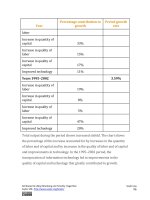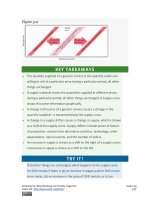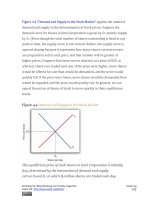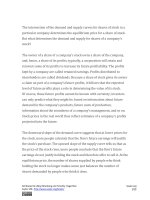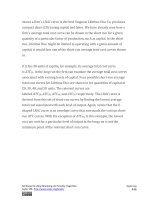Authors libby rittenberg 497
Bạn đang xem bản rút gọn của tài liệu. Xem và tải ngay bản đầy đủ của tài liệu tại đây (491.87 KB, 1 trang )
In the long run, a firm is free to adjust all of its inputs. New firms can enter
any market; existing firms can leave their markets. We shall see in this
section that the model of perfect competition predicts that, at a long-run
equilibrium, production takes place at the lowest possible cost per unit
and that all economic profits and losses are eliminated.
Economic Profit and Economic Loss
Economic profits and losses play a crucial role in the model of perfect
competition. The existence of economic profits in a particular industry
attracts new firms to the industry in the long run. As new firms enter, the
supply curve shifts to the right, price falls, and profits fall. Firms continue
to enter the industry until economic profits fall to zero. If firms in an
industry are experiencing economic losses, some will leave. The supply
curve shifts to the left, increasing price and reducing losses. Firms
continue to leave until the remaining firms are no longer suffering losses—
until economic profits are zero.
Before examining the mechanism through which entry and exit eliminate
economic profits and losses, we shall examine an important key to
understanding it: the difference between the accounting and economic
concepts of profit and loss.
Economic Versus Accounting Concepts of Profit and
Loss
Economic profit equals total revenue minus total cost, where cost is
measured in the economic sense as opportunity cost. An economic loss
(negative economic profit) is incurred if total cost exceeds total revenue.
Attributed to Libby Rittenberg and Timothy Tregarthen
Saylor URL: />
Saylor.org
497
